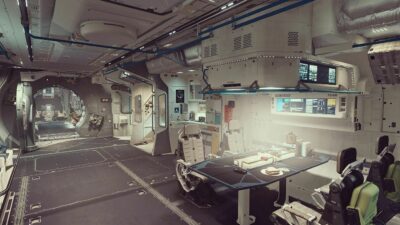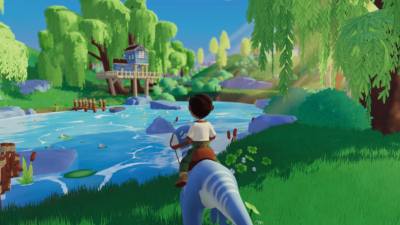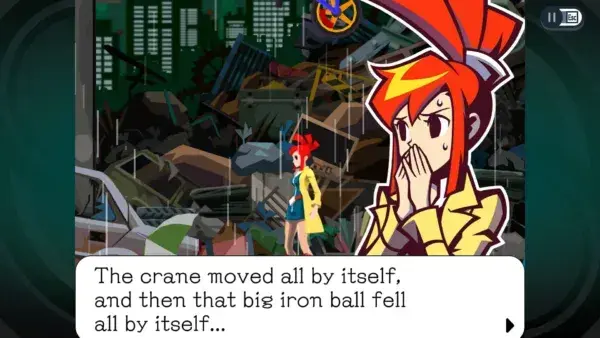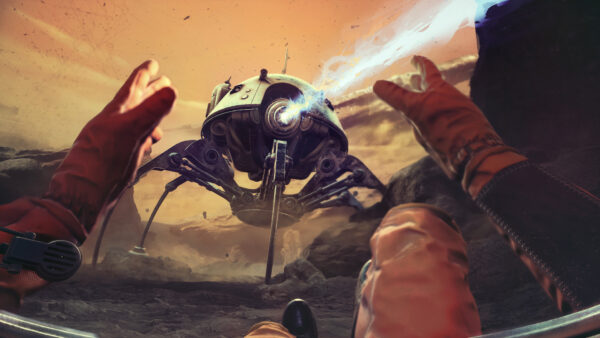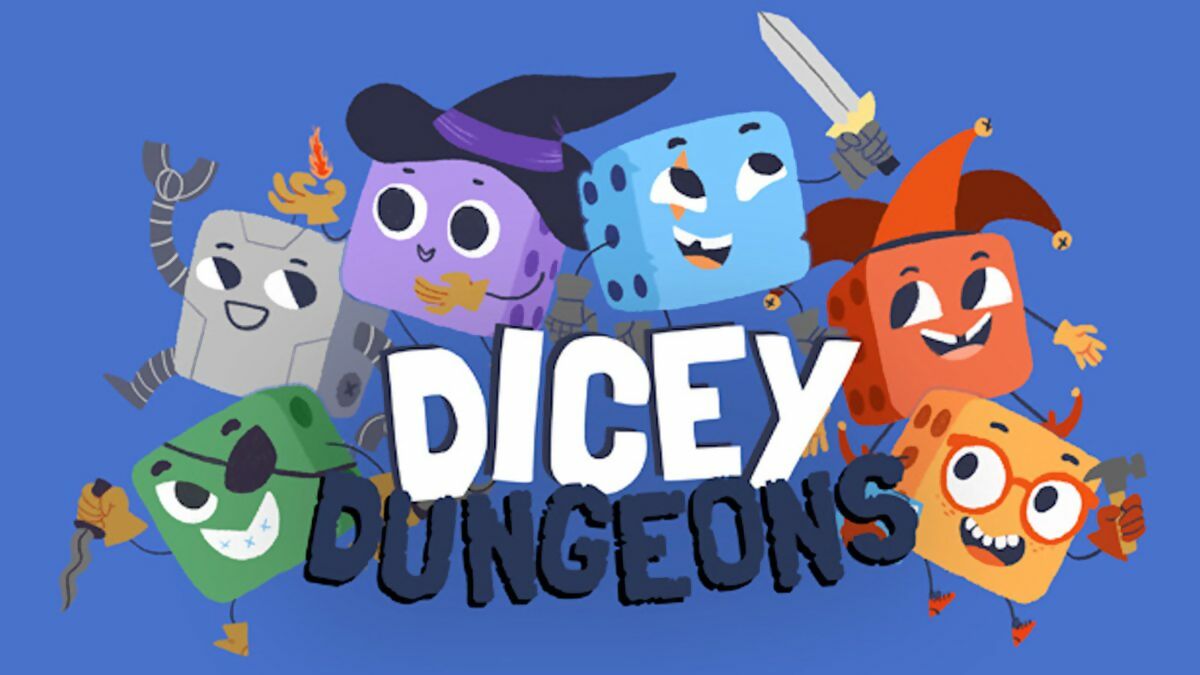
Terry Cavanagh (VVVVVV, Super Hexagon) spoke with Wireframe for issue three on his new project, Dicey Dungeons. Here’s the interview transcript in full:
WIREFRAME: What got you into programming your own games?
TERRY: I started making games on my C64 when I was a kid! As soon as you turn a C64 on, it starts you right into BASIC, before you see anything else. It makes it pretty hard not to wonder about what’s possible! I read the C64 manual and Commodore Format and learnt some basic stuff, but never really did anything serious.
But then, as a teenager, I played Final Fantasy VII, and for whatever reason it astounded me so much that I knew I wanted to be a game designer. I spent a lot of my time during my teenage years trying to make RPGs, very unsuccessfully. Over the years, I drifted into other genres with action games – so Dicey Dungeons is kind of a return to those teenage ambitions!
WIREFRAME: Looking back, were you happy with your early successes on the App Store – and how do you view the store now?
TERRY: Definitely, Super Hexagon did way better than I expected it to. I feel extremely lucky that it found such a big audience – at the time, I expected it to be this super niche thing.
WIREFRAME: Are there any lessons from your early hits VVVVVV and Super Hexagon that you have carried with you into your new game?
TERRY: They’re very different games, but I kinda feel like working on action games has given me a very good sense of timing and flow, and has helped Dicey Dungeons feel snappy and fun and responsive in a way that you might not expect a turn based game to feel.
WIREFRAME: Where did the concept for Dicey Dungeons come from? Have you played a lot of roguelikes, and any particular influences on Dicey Dungeons? And there have been comparisons in the gaming press to the card-based Slay The Spire, what would you compare Dicey Dungeons to and why?
TERRY: We’re both inspired a lot by the same game, Peter Whalen’s Dream Quest. Slay the Spire seems like a super cool game, but I’ve avoided playing for more than an hour or so because it’s clear that we’re exploring the same design space. Once Dicey Dungeons is finished, I’m looking forward to checking it out properly!
Dream Quest is legit one of my favourite games ever. Dicey Dungeons essentially started as a Dream Quest fan game, back when it was a jam game for 2018’s seven-day roguelike. I was really interested in thinking about ways to take that Dream Quest deckbuilding roguelike concept in different directions, and Dicey Dungeons is my way of exploring that. More people should play Dream Quest, it’s a very overlooked masterpiece!

A Dicey boss encounter
WIREFRAME: How did you come up with the different classes?
TERRY: The idea to have different classes at all is, of course, hugely inspired by Dream Quest, whose class system brilliantly re-imagines the focus of the cards you find for each character – so, its Warrior class finds physical attacks, its Thief finds skills, its wizard finds magic spells, and then all those classes more find cards that help compliment those playstyles within those focuses. I think the way Dream Quest handles all this to make each character feel so different to play is fantastic.
So, for Dicey Dungeons, that idea of using different classes to focus on different styles of play was something I wanted to try doing right from the very start – but I thought it’d be interesting to take it as far as I could, and actually vary the core mechanics between classes. I was really excited by the idea of establishing a basic set of rules with the starting class, and taking that in as many different and unexpected directions as possible.
To give a less abstract example: One of the really basic mechanics in the game is that you start with two dice every turn, and then get more as you level up. When I was designing the Robot class, I was reading a lot about classic dice games, and wanted to try changing this basic premise completely! So, when you play as the Robot, instead of just having two dice, you have this ‘target’ which increases as you level up, and can roll as many dice as you like trying to hit that target. If you go over, your turn is over. This change makes the character play in a radically different way, and so, the equipment you find has to be very different to balance that.
WIREFRAME: The Witch class is very different, and that design process took you a long time – could you describe how you managed to balance it successfully?
TERRY: So, the Witch! Unlike the other characters, the Witch doesn’t have a static inventory – instead, she has a spell book, which summons copies of equipment that you’ve stored. When you place a dice on the spell book, you create a copy of the corresponding spell – a four might give you a fire spell, a two a poison spell, and so on. But you could, in theory, create multiple copies of each spell, and create a hand that’s especially powerful against whatever enemy you’re up against.
The Witch is my favourite class to play by far – it requires a more careful, deliberate playstyle – but also requires a certain amount of adapting your plans to match what you’ve actually rolled, which, it turns out, is super fun. It’s the class I’m most proud of.
It took a long time to get it right, though! I didn’t start with a fully formed picture of how the character would work at all – it actually started by trying to create a character that wasn’t equipment focused all. It took multiple iterations and several pivots to narrow down the core mechanic of the class as ‘summoning equipment’. Once I got it to that point, balancing the character was a process of figuring out interesting spells, changing spell distributions, and making some mechanical tweaks. One example: in early versions of the character, it was very possible to get stuck on your first turn if you were unlucky with your initial roll, preventing you from getting important spells cast – so I added a ‘prepared spell’ slot, which meant you could choose a spell in your starting hand.

It’s not just dice, it’s… well, mainly dice
WIREFRAME: The early alpha builds had MIDI versions of pop tunes – what were your favourites to listen to?
TERRY: Haha, yeah, back in the early, free days of the project, they made for some interesting placeholders! They’re long gone, of course.
I really like the MIDI version of Scared Of The Dark, by Steps. You know a song’s really good when it’s still a banger in MIDI form. Also very fond of the slightly wonky and off key version of Adele’s Rolling in the Deep, which suffered a lot at the hands of a very bad MIDI to MP3 conversion through my own audio tool, Bosca Ceoil. It ended up having this weird charm to it, like, it’s clearly wrong, but still full of energy and feeling.
WIREFRAME: What is it like working with Chipzel again, and what is your working process like (for example, do you share ideas/inspirations or ask for a particular style?)
TERRY: Chipzel is amazing to work with! She has such a high standard for everything she creates, and she’s so driven to make everything as good as it can be. She has this vision of what she wants the game to sound like, and it’s been really inspiring. I hear it get a little bit closer with every version. I think her work on the game has been incredible.
WIREFRAME: Marlowe Dobbe brings a very distinctive style to the graphics, taking the game away from the swords & sorcery/epic style; was this important to make the game stand out, and what are your favourite graphics so far?
TERRY: When I set out looking for an Art Director, the main thing I wanted to do is try and get away from the ‘grimdark’ aesthetic that so many roguelikes have. So I feel so lucky to have found Marlowe for this game – her artwork is amazing. It’s so bright and colourful and funny and full of life. I feel like there’s nothing else out there that looks quite like this, and I love that.
WIREFRAME: The latest build features animated enemies – did this take a lot of work, and do you think it adds “life” to the characters?
TERRY: Yeah, adding animations to each enemy was one of the big goals I had for the game, visually, and I’m so happy that we’ve finally gotten there! It’s been a lot of work for Marlowe, but I think it’s paid off – it adds so much to the game.
There are a lot of amazing animations in the game now, but in particular, I love Stereohead, with his jazzy purple suit and finger snaps, The Mimic, who blows kisses and flashes razor sharp teeth, and the Sorceress, distractedly checking her phone while occasionally glancing up at the player.

A Dicey thief battle
WIREFRAME: There is a hidden Bear class, what was the thinking behind it and does it make things easier?
TERRY: Haha, well… it was really one of those things where I just thought: what’s the best thing that could happen here?
There’s an enemy who uses various potions against the player. One sets your dice on fire, another poisons you – the last one turns the enemy into a powerful bear who can do a lot of damage.
There’s also a class, the Thief, who gets to steal a random piece of enemy equipment every turn.
The Bear came about from thinking: what should happen if the Thief steals that potion? One possibility was a temporary power-up, but it just seemed way, way funnier to make it permanent! So, if you steal the bear potion and use it as the Thief, you become a Bear! And the Bear has its own set of equipment, its own skill tree – it’s actually a fully fleshed out class that you can complete the game with. The moment when players discover it is basically my favourite thing in the game right now.
WIREFRAME: Some Classes can join a Guild – but each Guild has both a positive effect AND a negative effect/curse. Do you think that was important to balance the game?
TERRY: Mostly, the Guilds are more negative than positive! It’s usually a bad idea to join them if you’re mainly focused on winning. But really, the guild system is just a preview for the particular system I’m most excited to explore in the game, my ‘Quest’ system. Guilds will be going soon in an upcoming version of the game.
The main thing I’m interested in doing with the game is taking this very simple set of core mechanics, and, then, with the different classes, explore those systems in lots of cool ways. What I’m currently working on is a system which pushes that even further, on another axis: a series of challenges for each character where the conditions and rules and mechanics are slightly tweaked, requiring you to play differently and think about how you approach each character in a new way.
Right now, there’s a hard mode in the game, where all enemies get upgraded equipment. This is also getting folded into the new Quest system as one of the possible “tweaks” to the rules that you can take on! I think these tweaks, and combinations of these tweaks bring a maybe surprising amount of variety and interesting challenges to the game, and I’m really excited about exploring that further. To me, this is really the central idea in Dicey Dungeons that makes it interesting!

And a Dicey robot battle
WIREFRAME: The early alphas were free, now anyone paying for the game gets access to new updates as they happen – is this your own form of Early Access, and what benefits do you think it has?
TERRY: It’s not really something I’d planned, haha. I think it worked out pretty well, though! It was really cool to be able to share something from the really early stages like that. I’ve been very won over to early access, thanks to Dicey Dungeons. I don’t think it works for every game, but I’m definitely planning on going with this approach again for future project.
WIREFRAME: The pace of development has been pretty rapid, with new alphas often appearing every couple of weeks. Can you keep up this pace, and how much further do you estimate you have to go?
TERRY: Probably not, we’ve slowed down a lot already! For the first month, I did updates every week – after that, I did updates every two weeks. Since putting the team together, I’ve slowed down even more – but the longest gap so far has been about five weeks. I think this is just a natural consequence of getting to the end of the project.
We’re aiming to have v1.0 ready on Steam some time in early 2019.
WIREFRAME: Do you see Dicey Dungeons as being a long-term project or will you move on soon?
TERRY: With roguelikes in early access, it can be tempting to basically work on them forever, but that’s not something I’m interested in doing here. Personally, I just think it’s better for the game when there’s a final, complete version that’s the ‘definitive version’. Probably by the time it’s finished, it’ll have been a year in total, maybe a little less.
WIREFRAME: Are you working on your next idea already?
TERRY: I have some ideas for small new things, but I’m feeling very motivated to work as much as possible on Dicey Dungeons right now, which is a good sign. This game has been a lot of fun to make!


